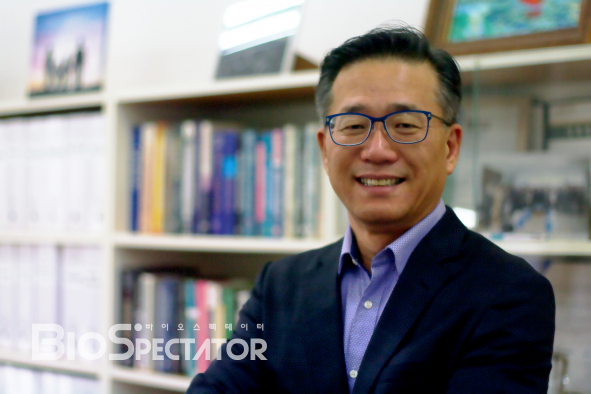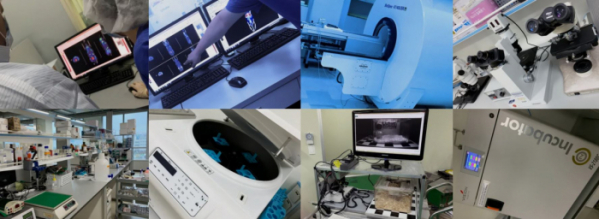기사본문
Global CNS professional CRO, Nasson Science’s potential
입력 2021-03-02 08:01 수정 2021-03-02 08:01
by Sungmin Kim

Nasson Science is a CNS CRO established in Korea in 2017. Nasson Science was established to target the global market from the beginning, and its partners are diverse not only in Korea but also in Europe, including Germany and the Netherlands, and Japan. The company was selected as Eurostars 2, an international task development project jointly conducted by Biotech and universities in Europe for the 2 consecutive years, last year and this year.
Recently, there was a milestone in which European Biotech, which cooperated with Nasson, to derive excellent preclinical results, spin-off the asset. In addition, existing partner companies are requesting preclinical research on diseases without their existing models to Nasson, expanding their scope to ophthalmic diseases and women's diseases.
Nasson has a unique management organization and history. Along with the experience of developing new drugs, the main management team has the experience of selling the CRO company to Charles River. Larry Park had 25 years of experience in developing new CNS drugs before establishing Nasson Science. He spent 13 years in charge of preclinical projects at the CHDI Foundation in the United States, and worked on new CNS drug development projects at Vertex Pharmaceuticals and Galileo Pharma.
Nasson’s co-founder Patrick Sweeney, COO, is a co-founder of CNS-specialized CRO Cerebricon in Finland and has more than 20 years of preclinical CRO and business development (BD) experience, including being the head of the Finnish site after the company was acquired by Charles River in 2009. Since CEO Park was at CDHI, Sweeney has been in partnership with Cerebricon for more than 15 years, and he first suggested to Park to create a CNS CRO with expertise.
CEO Park, who had been agonizing over starting a business, had been paying close attention to Osong KBIO Complex, which has a global-level laboratory animal center, and moved in there in 2017. Park is leading the pre-clinical efficacy evaluation in Korea, and Patrick is in charge of marketing Nasson Science in the United States, Europe and other regions by utilizing his CNS CRO experience and network. In addition, Chief Scientific Officer (CSO) Dr. Jonathan Freeman has previously had more than 25 years of experience in the field of CNS and pain drug development in Teva Pharma, Israel. He provides trial design proposals, marketing, and consulting at Nasson.
Park said, "I have returned to Korea for the first time in 35 years. At the time of the company’s establishment, most domestic biotech and pharmaceutical companies were barren, depending on overseas pre-clinical CROs. Under these circumstances, we established the company to properly develop pre-clinical new drugs. Nasson Science will provide guidance and consulting services for new drug development while assessing its efficacy in preclinical animal models."
Starting with three members in 2017, Nasson Science has grown to 25 in 2020 by making profits from 2019. This year, it is expected that the number of staff will increase to about 40 to 50 by expanding and constructing its own laboratory and animal model facility. Sales are expected to increase to 1.7 billion won last year and 4 billion won next year. In addition to this, it plans to go public (IPO) within two years.
In order to understand the characteristics of the company Nasson Science, it is necessary to examine the unique identity of CHDI, which Park has extensive experience with. CHDI is a non-profit R&D institution founded in 2002 just to accelerate the development of therapeutic agents with a focus on Huntington's disease (HD). The purpose is to directly support the preclinical and clinical development process of new drug development by "best-asset" and "best-partner" to provide patients with prompt treatment.
CEO Park managed about 150 pre-clinical candidate substance projects while supervising the preclinical businesses at CHDI. In the meantime, he felt keenly that the efficacy/validity of the CNS field, where the risk of new drug development is greater than in other fields, should be properly evaluated. In response, he established Nasson Science as a CNS field specialized CRO with experience and expertise in developing new drugs.
Then, What are the three keys in the CNS New Drug and Preclinical Efficacy Evaluation? As a CNS CRO focused on efficacy evaluation and animal models, Nasson has three important indicators.
First, it is necessary to evaluate the efficacy of behaviors that can be clinically reproduced. An important indicator for Naason Science is the analysis of quality of life (QoL) in clinical models. In addition to the existing exercise-level efficacy indicators, it is necessary to track ▲ Social behavior analysis ▲ Daily behavior associated with the biological cycle of the animal ▲ Long-term and repetitive observations (longitudinal studies) of phenotypic pattern in the home cage where the animal lives through the automatic behavior analysis evaluation platform constructed independently. It can be used to track toxicity as well as drug efficacy.
“We have to see how the actual pre-clinical model suffers from the disease and improves the quality of life through efficacy of the drug,” said Park. “We continue to upgrade the AI platform that can measure objectively measure them. "
Second, in the short term, it is important to discover CNS disease markers and verify them through PK-PD modeling by pharmacological action. In particular, CROs must look for reproducible disease-related markers from the most objective standpoint and evaluate PK-PD association with drug administration. Park said, "The place where brain disease occurs differs depending on the CNS disease." " We need to find markers representing diseases in the pathological tissue according to the type of disease and verify whether there are changes from drug administration."
Third, in vivo imaging markers such as MRI/MRS and PET imaging, which can measure efficacy even in preclinical phase, should be actively utilized. CEO Park said, "These changes in biomarkers such as brain structure and changes have the advantage of being highly related to actual clinical data. I think it is important in that they may be translated into clinical development in the future."
He also proposed a novel approach to verify it in the Huntington disease model when developing Alzheimer's and Parkinson's disease treatments based on his experience in CHDI. "Huntington disease is a 100 percent genetic disease that causes abnormal exercise and cognitive decline. The cause of the disease is clear, and all five symptoms of the most common degenerative brain diseases such as Parkinson's disease and Alzheimer's disease appear," he said. "It can be an effective strategy to prove conceptual proof data in Huntington's disease model, which can represent degenerative brain disease unless the candidates target specific genes."
The future expandability of the Nasson Science is even greater. Along with the CNS disease animal model, the company is expanding its expertise to other diseases: ▲ Eye diseases ▲ Neuropathic pain and partial pain ▲ Metabolic diseases such as NASH ▲ Bones and autoimmune-related diseases ▲ Cancer diseases.
The reason for the expansion of the disease category was the spirit of challenge to science and the request of customers. Suggesting multi-dimensional interpretations and experiments in new directions based on expertise and science is also an advantage of Nasson Science compared to other CROs.
CEO Park said, "Nasson focuses on areas where others can't do well or where there is no model, where there are large needs. We will continue to invest a lot in developing new disease models based on our own ideas.

▲홈페이지 자료(https://naasonscience.com/capabilities)







